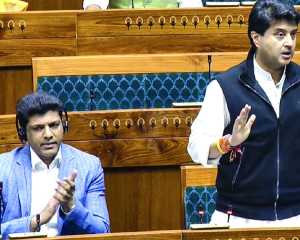Metro murals for Param Vir Chakra winners must be replicated for the next generation
The Delhi Metro has put up murals to honour Param Vir Chakra winners, transforming urban spaces into canvases of culture and history. Among the most poignant of these are murals dedicated to the Param Vir Chakra (PVC) winners, the highest military decoration awarded to Indian soldiers for their acts of exceptional valour during wartime. These murals not only serve as artistic tributes but also as a powerful reminder of the bravery and sacrifice of these unsung heroes.
The Param Vir Chakra is awarded to those soldiers who display extraordinary courage in the face of adversity, often paying the ultimate price for the safety and sovereignty of the nation. From the Indo–Pakistani Wars to the Kargil conflict, the valour of these soldiers has always been at the forefront of India’s military history.
But while their bravery is celebrated in military circles, it is essential that these heroes are also remembered in the heart of the public’s consciousness. The decision to honour Param Vir Chakra winners through murals is a step in the right direction — ensuring that their legacies are etched not just in the history books, but in the very spaces we live in.
These murals are not just decorative but hold deep significance. They act as visual landmarks in metro stations — places that see thousands of commuters pass by daily. In their fleeting moments of travel, these individuals are exposed to the murals, reminded of the heroes who defended the nation with unparalleled courage. By embedding these murals in the daily lives of citizens, the brave hearts who earned the Param Vir Chakra are given the attention and respect they deserve.
It is always crucial to honour bravehearts, as their sacrifices are the foundation of national pride and security. They fought not for fame or recognition, but out of a deep sense of duty. By commemorating them, we also emphasise the values of patriotism, sacrifice, and honour — values that are essential for the growth of a nation.
Moreover, such tributes provide an educational aspect to public art. Younger generations, who may not be familiar with the history of these gallant warriors, are exposed to their stories in a non-traditional format. A mural, rich with symbolism and imagery, can tell the story of a Param Vir Chakra recipient far more vividly than words can, offering a visual narrative that resonates deeply with those who may have never encountered these histories in textbooks. Honouring such brave soldiers in public spaces also sets an example. It helps instil a sense of respect for service members and the dedication required to protect one’s country. It teaches the value of courage and sacrifice, ensuring that these principles continue to inspire future generations. The concept of using metro stations as platforms for public art has gained significant traction in India over the last decade. As urbanisation grew and metro systems expanded in major cities like Delhi, Mumbai, and Bangalore, authorities recognised the power of art to transform sterile, utilitarian spaces into cultural hubs.
Metro murals are not a new phenomenon, but their focus on historical figures and national heroes is a relatively recent development. Prior to this, murals mostly depicted abstract art or symbolic representations. As the push for greater recognition of national heroes grew, so did the idea to place these figures at the forefront of public consciousness through art.
Today, metro murals dedicated to Param Vir Chakra winners are part of a larger movement to preserve the history and valour of India’s armed forces in a visually accessible way. For instance, the Delhi Metro, one of the busiest metro systems in the world, has a long history of commemorating India’s heroes through art. Murals celebrating figures from the Indian independence struggle, as well as the brave soldiers of post-independence wars, have become a common sight. These murals are a testament to India’s commitment to never forget its warriors, regardless of how much time has passed. Murals have the power to communicate in a way that transcends words. Unlike statues or plaques, which can sometimes feel distant or formal, murals exist in the everyday life of a city. They engage people on their way to work, school, or while simply waiting for a train. These works of art are a bridge between history and the present, making it easy for anyone to reflect on the bravery of soldiers and the sacrifices they made.
Moreover, metro murals are also an important form of urban storytelling. They speak to the identity of the city and, in many ways, reflect the values of its people. By painting the faces of Param Vir Chakra winners on the walls of bustling metro stations, the cities are not only recognising their importance but also making sure their legacies live on.


























